Nowadays, many sides use a 4-3-3 formation. However, to press the opposition, there do exist a lot of different strategies that we can use in football coaching. Whereas some sides remain in their initial 4-3-3 shape to press, other sides change their setup with a clear intention.
This tactical analysis deals with the different varieties of pressing when playing in a 4-3-3. We will give you an overview of the various shapes including their advantages and disadvantages and their consequences on the press itself.
4-3-3 with a focus on central areas
A common way of pressing in a 4-3-3 is the way how Liverpool press under Jürgen Klopp. Klopp’s side attempt to guide the opposition build-up into central areas of the pitch in order to regain possession with their midfield three.
Therefore, the wide forwards are supposed to defend high up the pitch. Since this creates space on the wing, the full-backs must be ready to move up the line to press as well. Ideally, though, the wingers use their cover-shadow to prevent any passes into wide areas to be played. The striker meanwhile presses the central defender as well and therewith only leaves a central passing lane towards the central midfielder open.
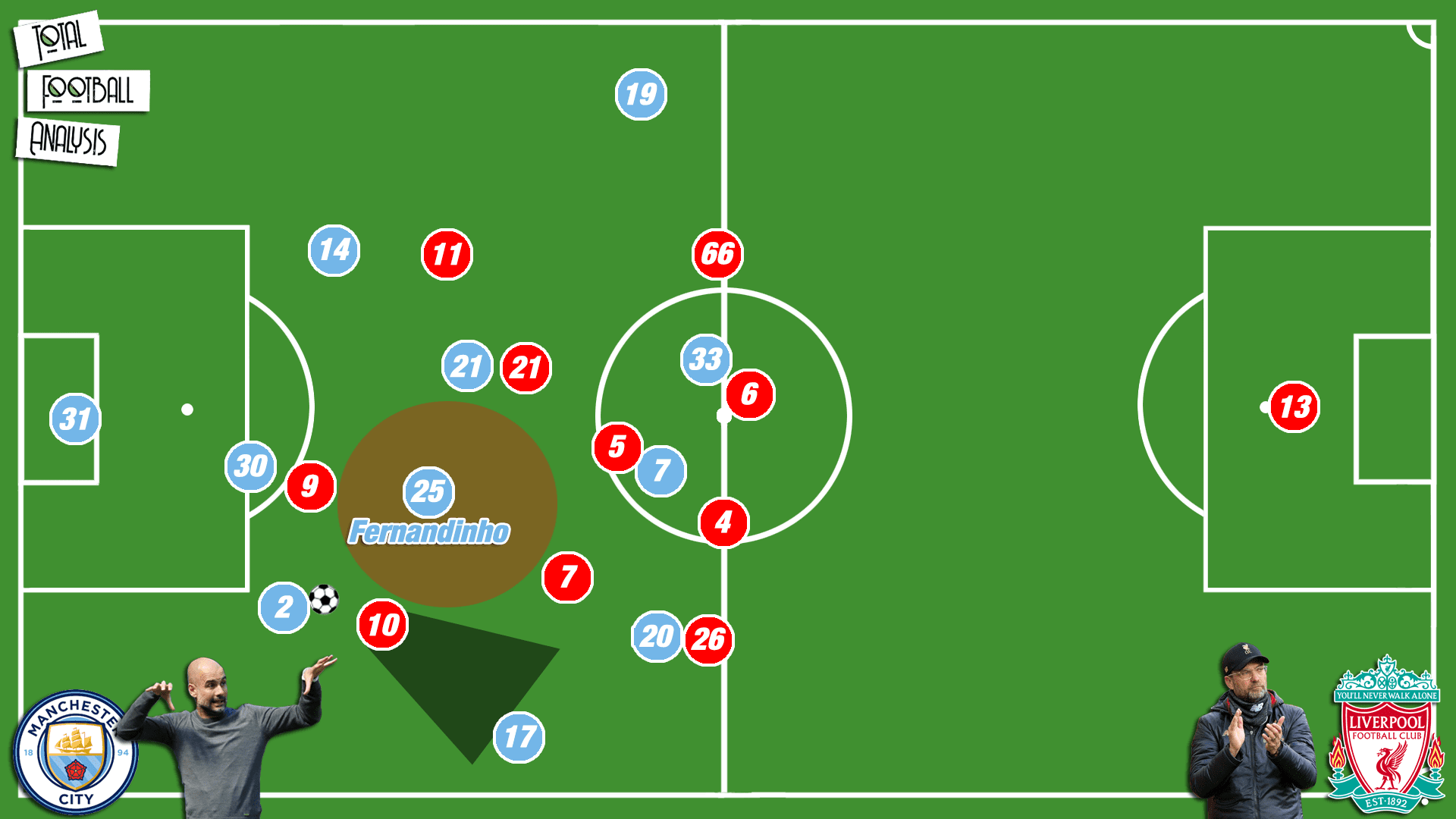
Once the opposition plays into the centre, the midfield three start to press and attempt to regain possession. One advantage of pressing the opposition central midfielders is that one can press from the blindside. Whereas wide players only need to perceive what is happening in an area 180 degrees around them, central players have a radius of 360 degrees full of options and therewith also possible pressing directions. Only a few players worldwide have a great pressing resistance in the centre. And if pressed well, even they struggle to keep possession.
Slightly different, the striker can also drop in order to prevent a pass towards the opposition pivot and therewith force a square pass or back pass to be played. In the case of the latter one, the space would resemble the one of a 4-3-1-2. Leipzig, for instance, utilised this press several times under manager Ralf Rangnick as displayed below.
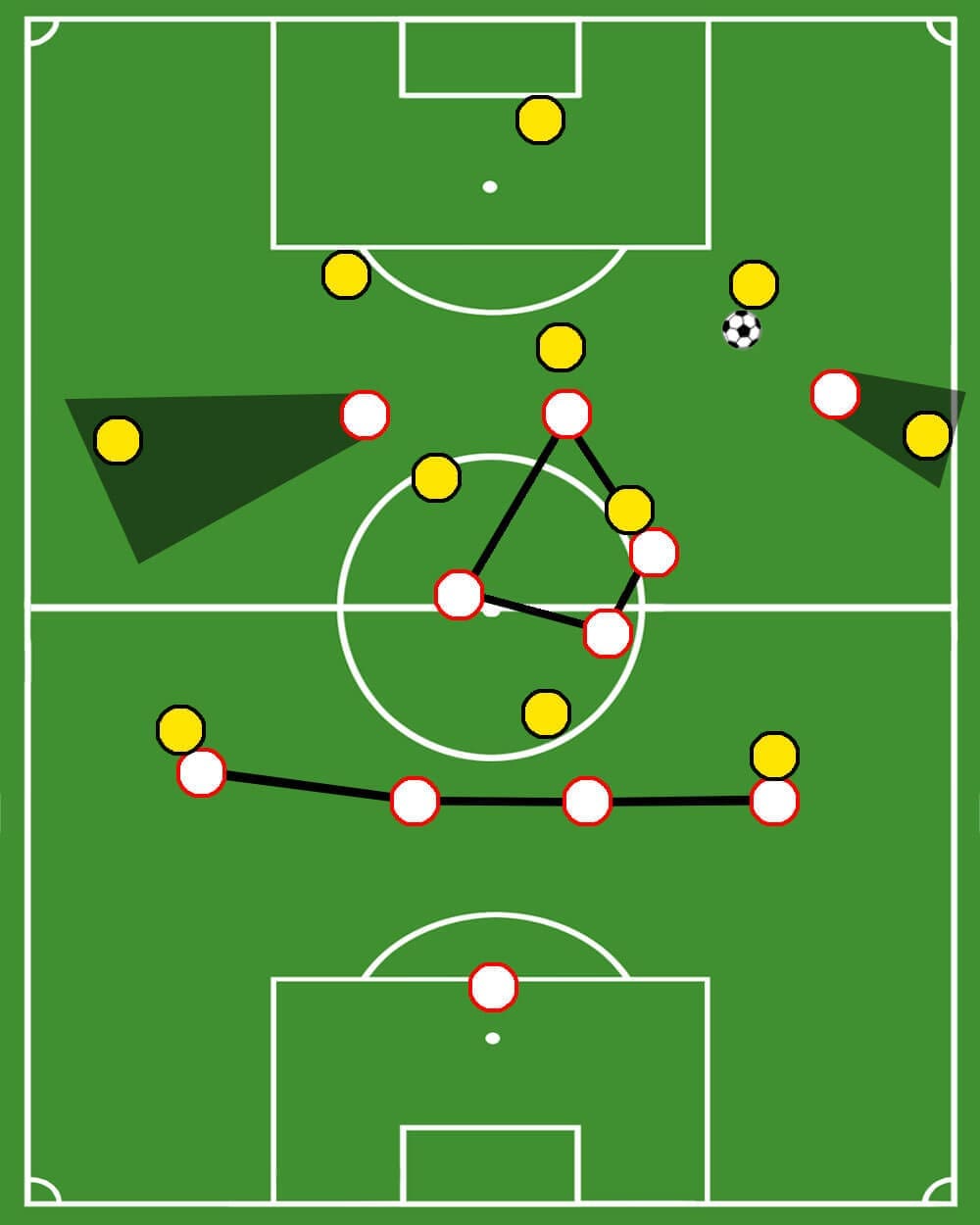
Since the opposition is offered no short passing option, this press often leads to long balls.
Another important feature of this press is the back press. Whenever the first line of the press is overplayed, the attackers need to press backwards in order to reduce time and space for the ball-carrier.
4-1-3-2
Another popular concept to use the structure of a 4-3-3 is to switch into a 4-1-3-2 when pressing. This is often used when the 4-3-3 is played with a holding midfielder behind two advanced midfielders.
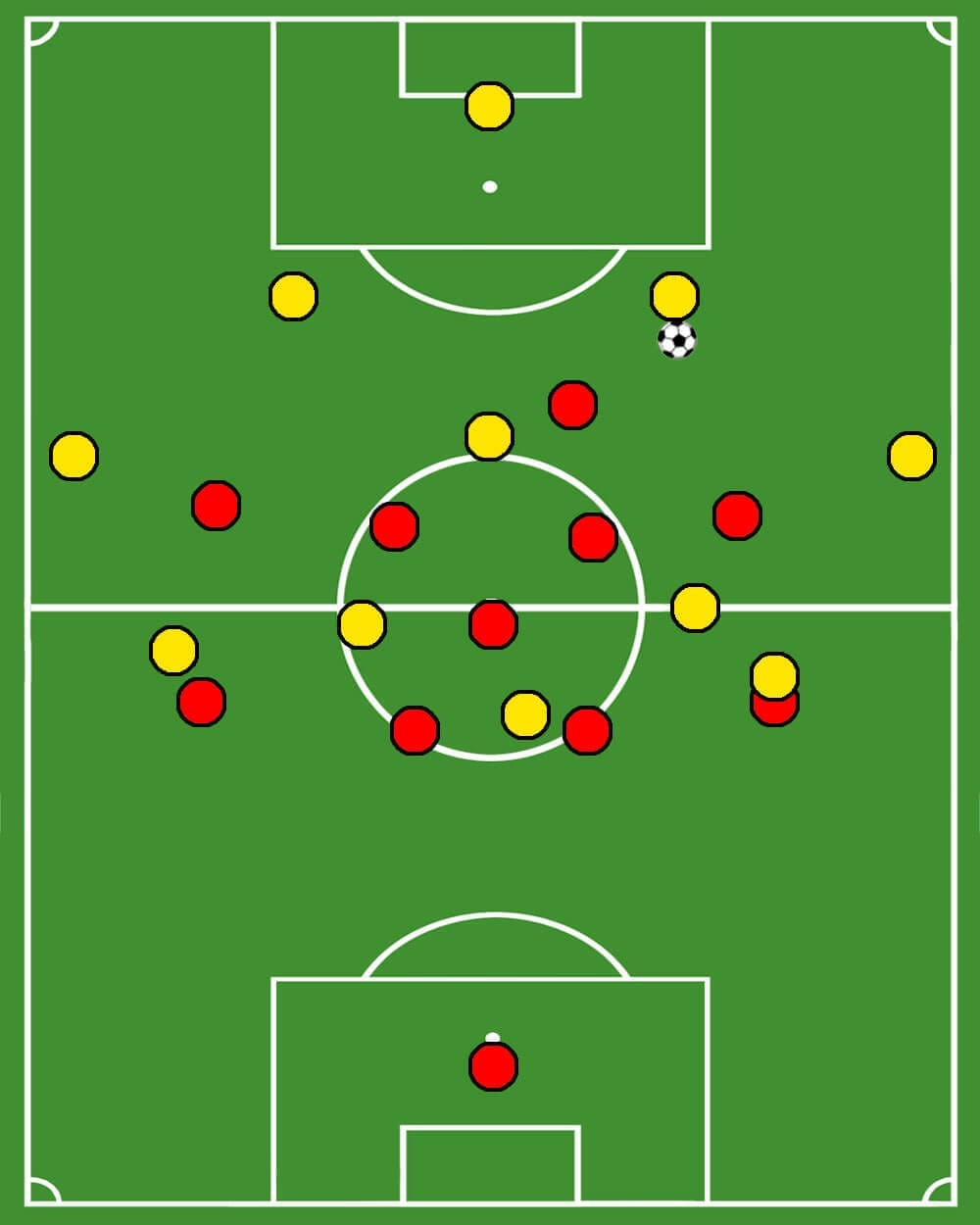
The advanced midfielders support the attacking department when pressing while the holding midfielder covers in front of the backline.
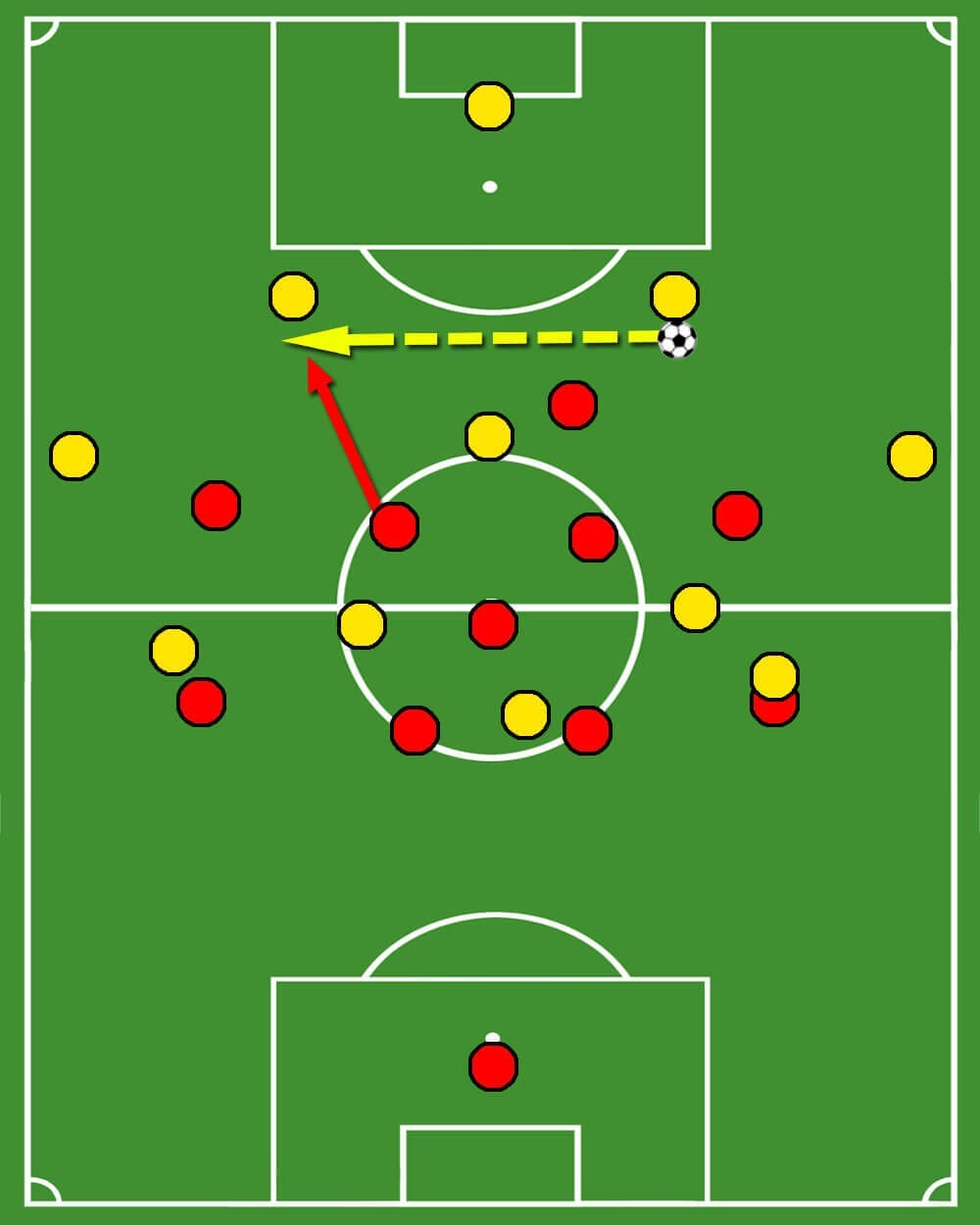
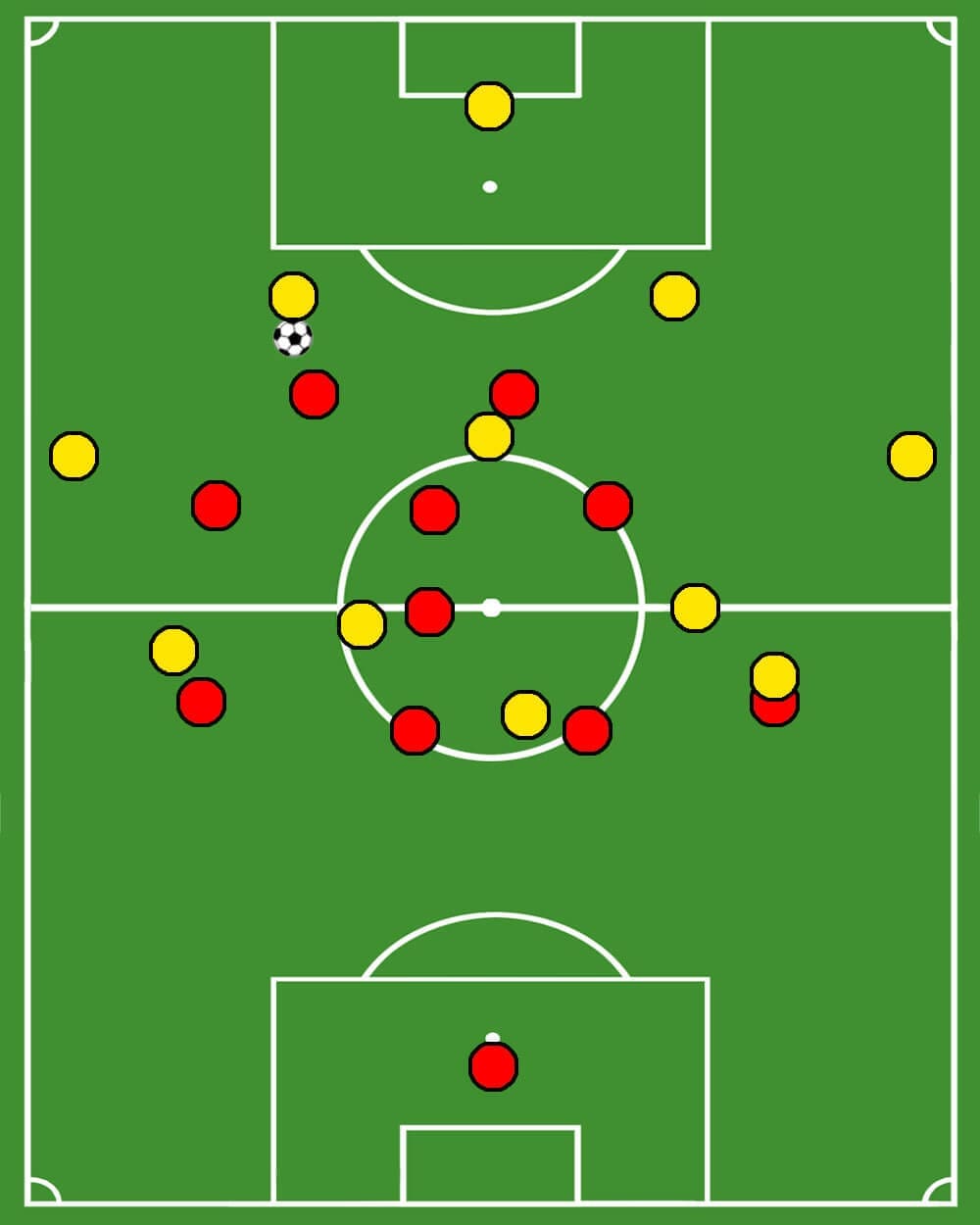
This creates two departments within the squad. A 4-1 to cover the press in the back and a 3-2 to press the opposition. Especially the 3-2 staggering of the attacking department is useful to apply pressure on opposition defenders while controlling the centre and guiding the opposition build-up towards the sideline.
Croatia used this setup during the World Cup 2018 under Zlatko Dalic like in the picture below.
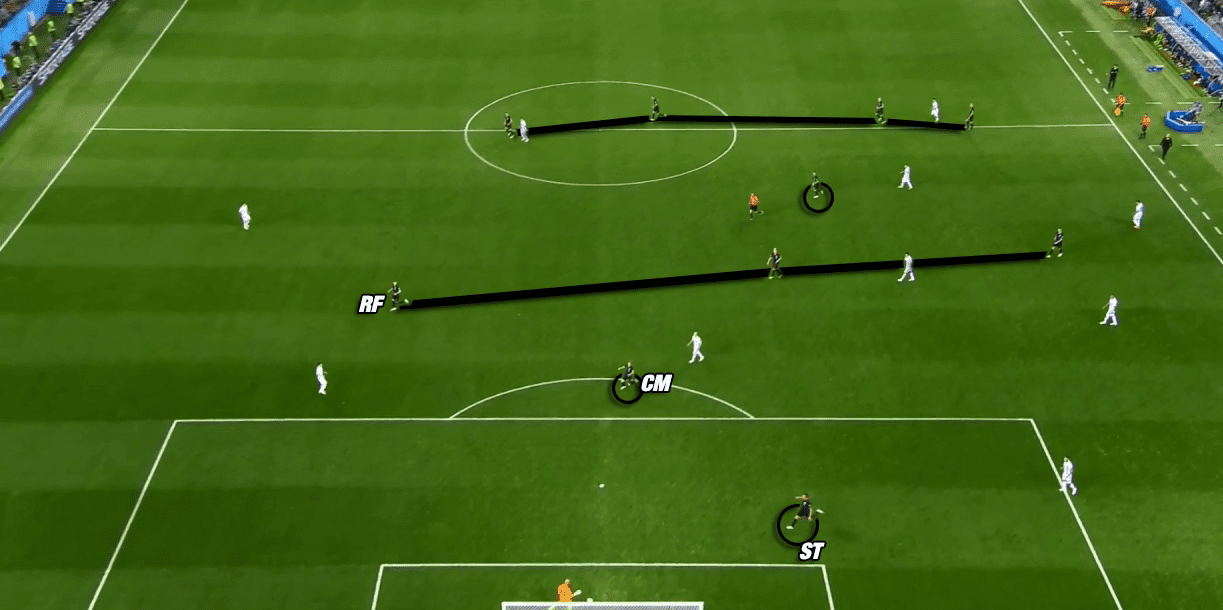
4-4-2
Sides which use deep wingers that support the full-backs during the defensive phase sometime create a 4-4-2 structure when pressing.
In this case, a central advanced midfielder supports the attacker when pressing. Different to the 4-1-3-2 though, there is no single holding midfielder in front of the backline. Instead, the other two central midfielders form a double pivot. This enables the wingers to stay in wider areas as it creates a line of four compared to the midfield three in a 4-1-3-2.
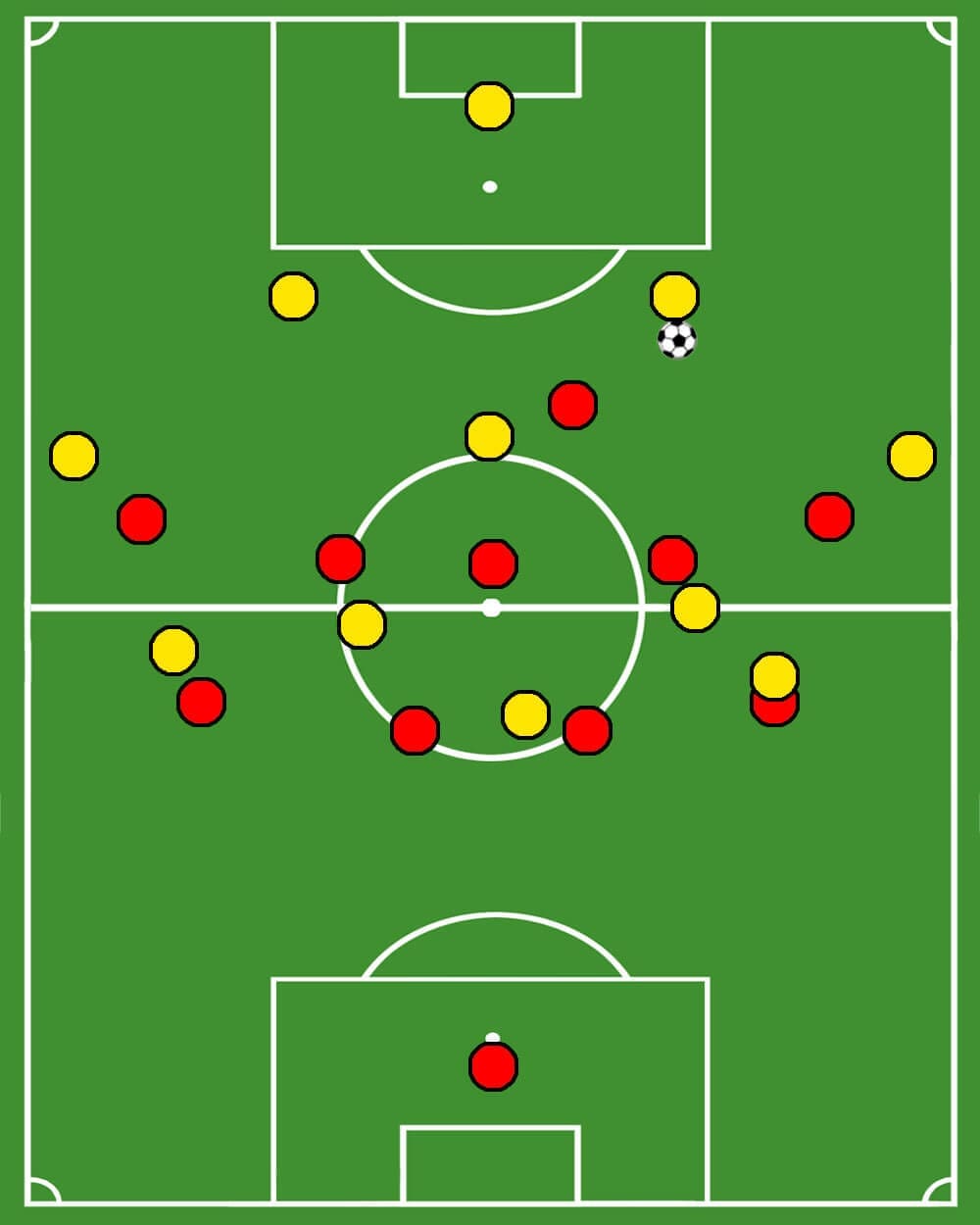
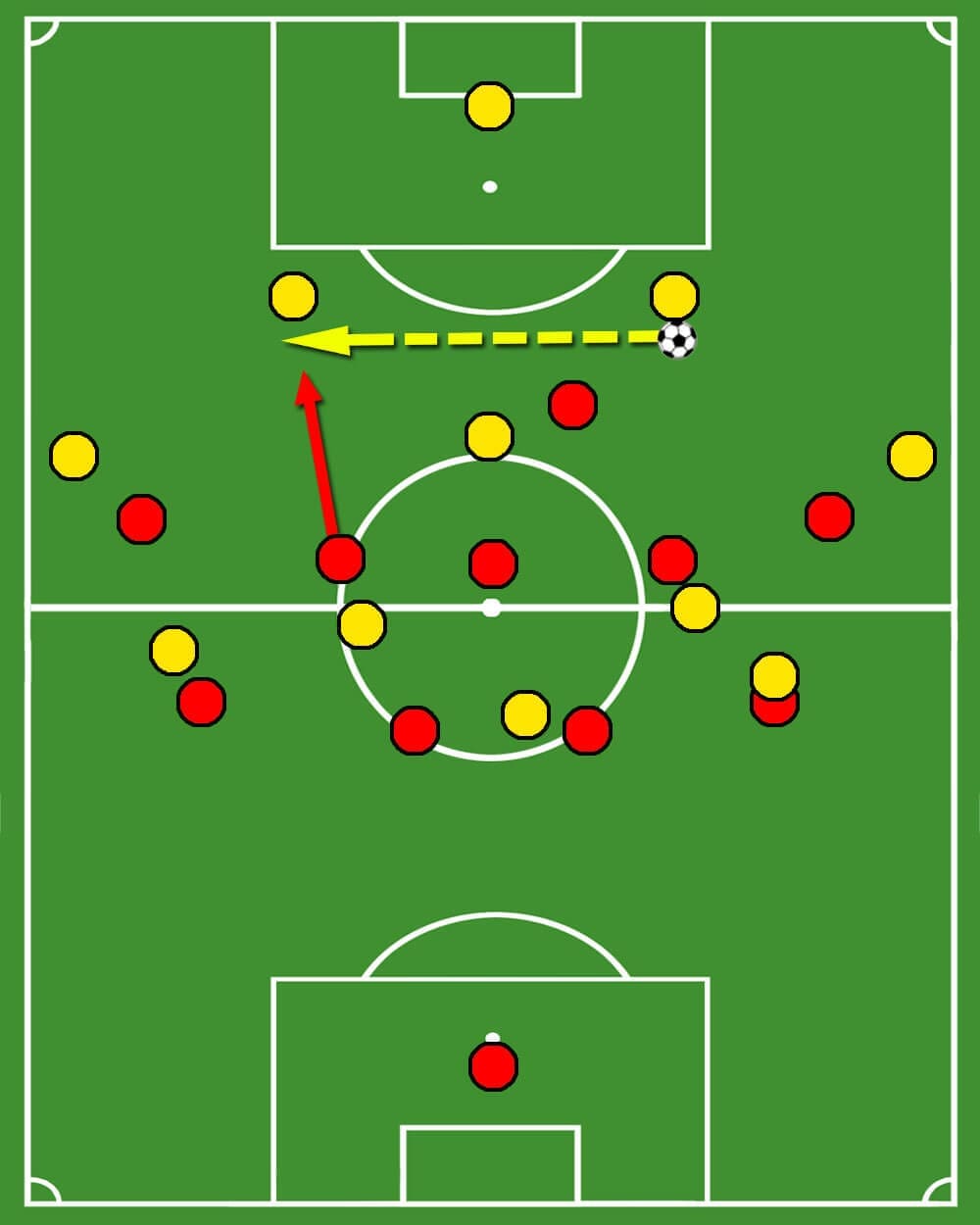
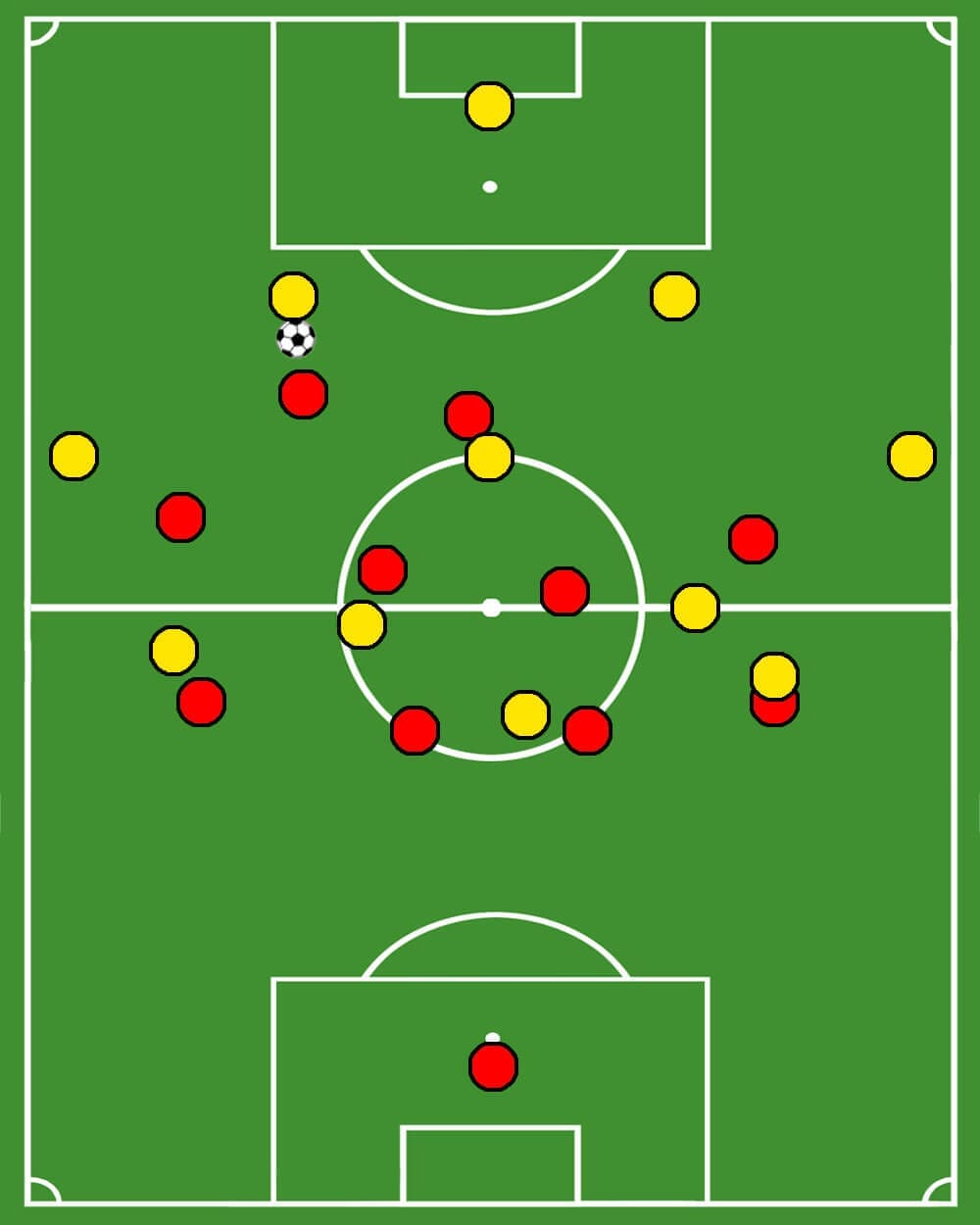
However, in this setup, it is important that both central midfielders have a good staggering when pressing high up the pitch as there are only three lines and therewith less depth can be defended.
4-3-2-1
Opposite to the mentioned 4-3-3 tactics with guiding the opposition into the centre, the 4-3-2-1 prevents the opposition from playing into central areas.
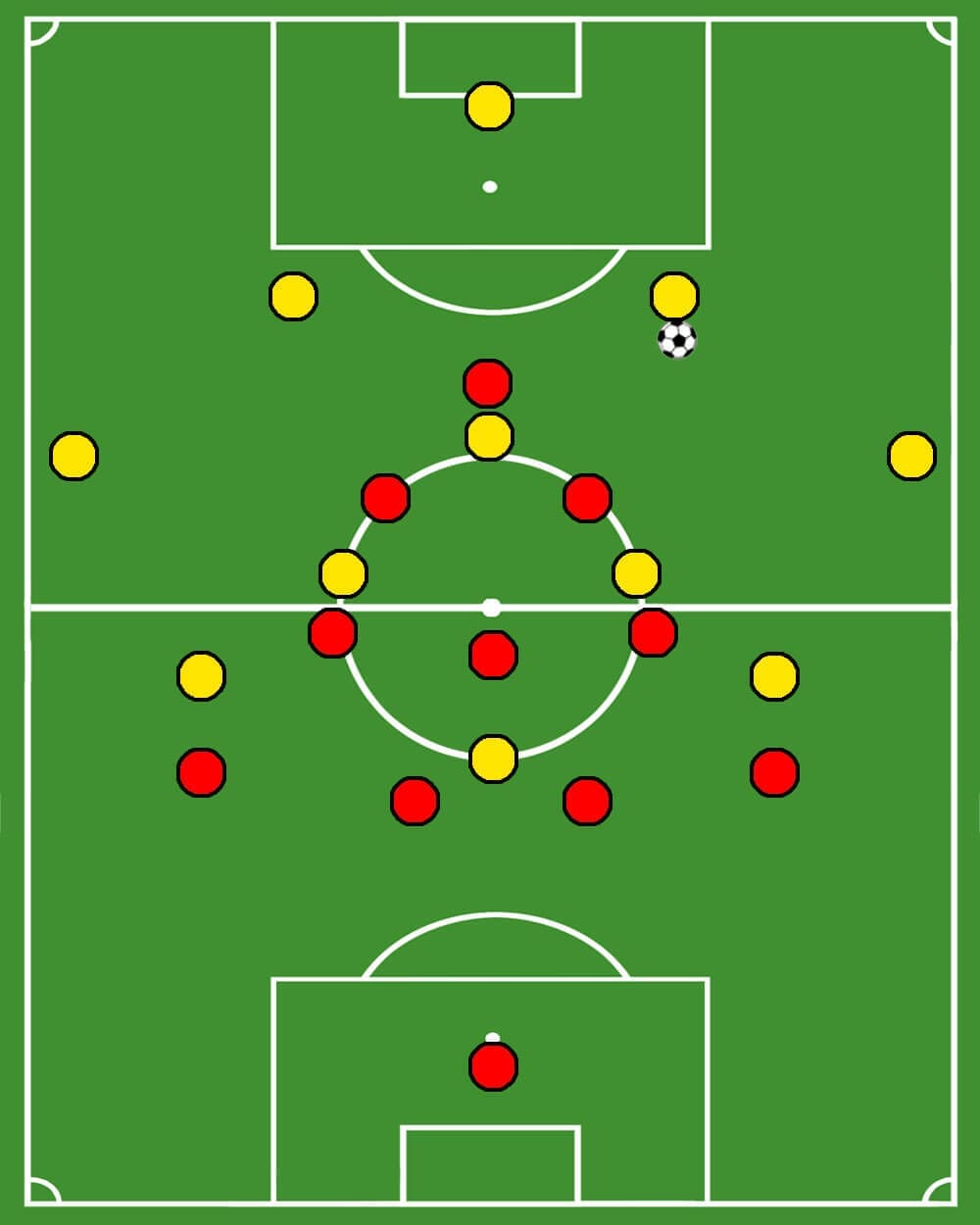
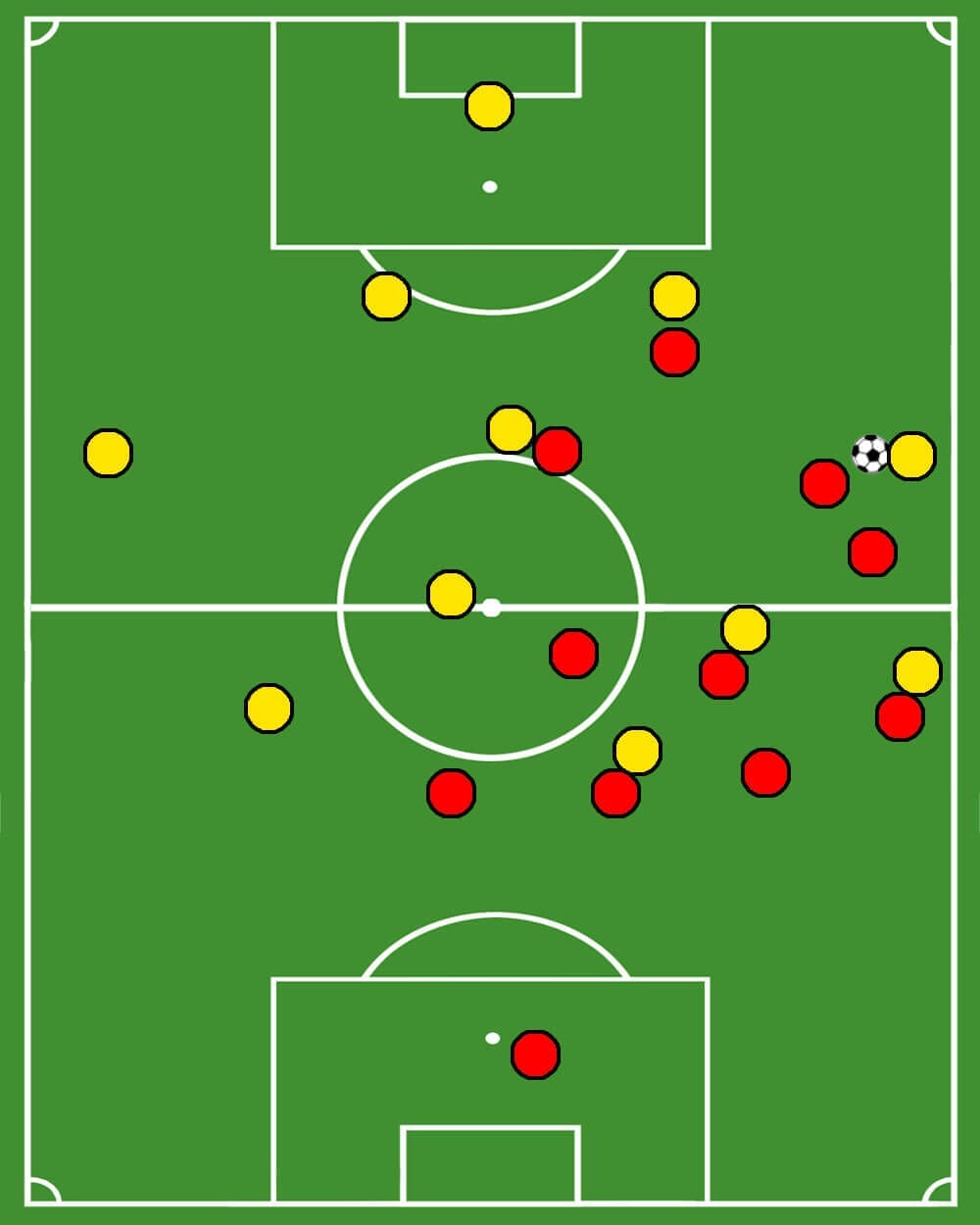
To form a 4-3-2-1, the wingers tuck inside and defend the half-spaces behind the single forward. As a consequence, the wingers are positioned higher compared to the 4-5-1, but narrower than in a usual 4-3-3 setup. Their positioning can be important when it comes to counter-attacks.
With the whole attacking department taking up central positions, the 4-3-2-1 creates a numerical superiority in the centre of the pitch. But since the 4-3-2-1 does not offer much width, using this system includes the urge to cover a lot of metres in case the opposition is capable of switching play. Therefore, this shape is rarely used yet still a sensible option against centrally focused opponents.
4-5-1
Another possible structure which can easily be created from a 4-3-3 formation is the 4-5-1.
Due to the flat shape, the 4-5-1 is less ideal for an active pressing and more useful for a mid-block or low-block. This shape simply does not offer enough personnel upfront to press the opposition defenders.
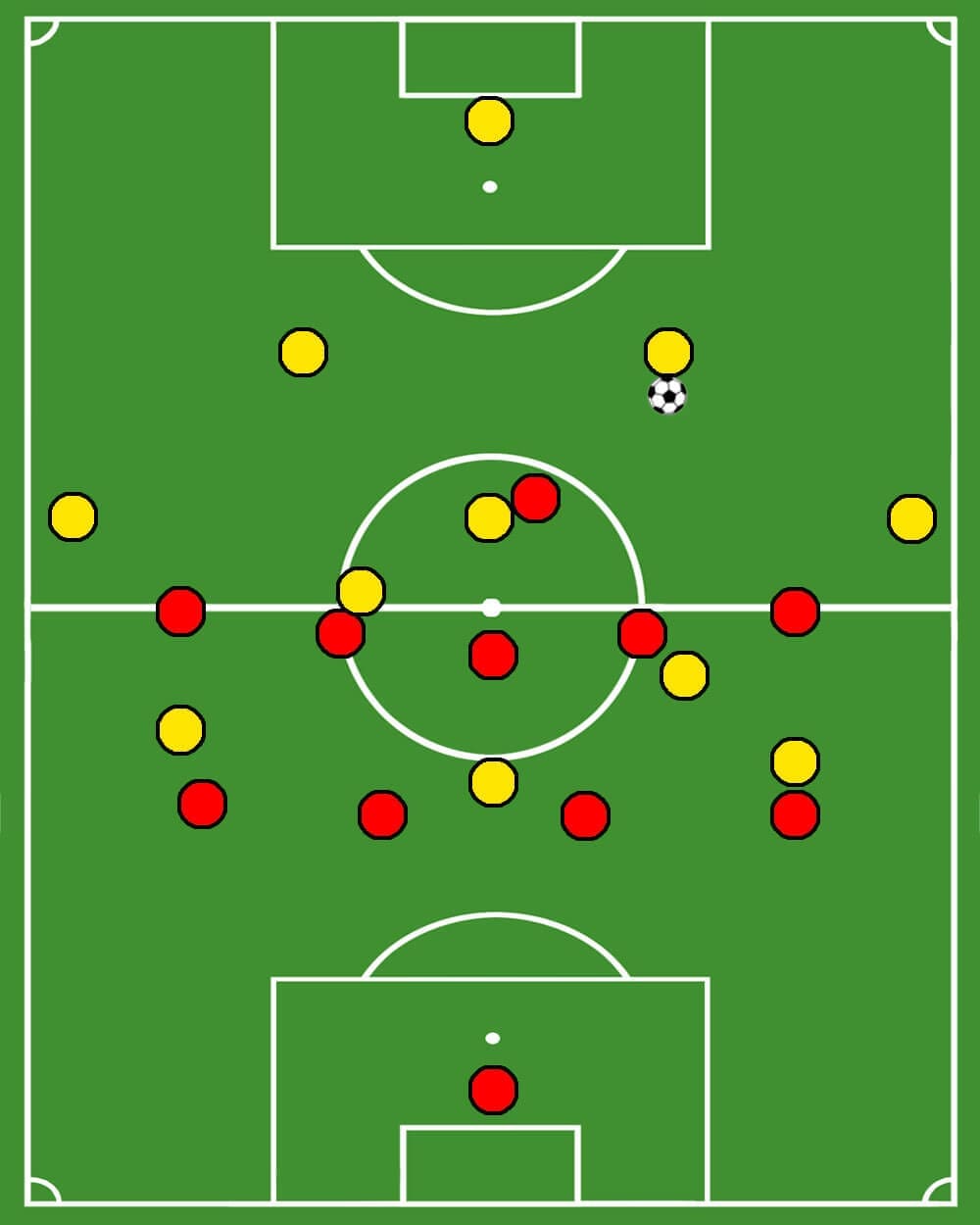
Nevertheless, the 4-5-1 allows for a good cover in central and wide areas. As a result, the only opposition players without any pressure are the centre-backs. In case they struggle to play line-breaking passes, a 4-5-1 might be a sensible concept in order to prevent the opposition from progressing up the pitch.
Pressing high or sitting back?
To sum up, the different shapes all entail advantages and disadvantages. Some shapes are rather useful for an active defending approach while others are suitable for a more reactive way of defending.
Whereas a shape with three lines such as the 4-4-2 and the 4-5-1 can be really sensible when using a low-block or a mid-block, systems consisting of four lines are more stretched vertically and therewith enable a higher press. That is because, within the opposition half, there is more space which needs to be defended than in the own half. Nevertheless, small adjustments such as a staggering in midfield obviously enables to turn a compact 4-4-2 block into a high pressing setup, too.
In general, the ideal setup depends on the abilities of the own team as well as the strengths and weaknesses of the opponent. That being said, one should decide whether to guide the opposition build-up into wide or central areas.
Conclusion
All in all, when playing in a 4-3-3 there are plenty of different pressing setups. Nevertheless, as shown in our analysis all setups come along with certain advantages as well as disadvantages. Therefore, its own strengths and weaknesses must be considered in order to choose the ideal setup.

If you love tactical analysis, then you’ll love the digital magazines from totalfootballanalysis.com – a guaranteed 100+ pages of pure tactical analysis covering topics from the Premier League, Serie A, La Liga, Bundesliga and many, many more. Buy your copy of the July issue for just ₤4.99 here, or even better sign up for a ₤50 annual membership (12 monthly issues plus the annual review) right here.

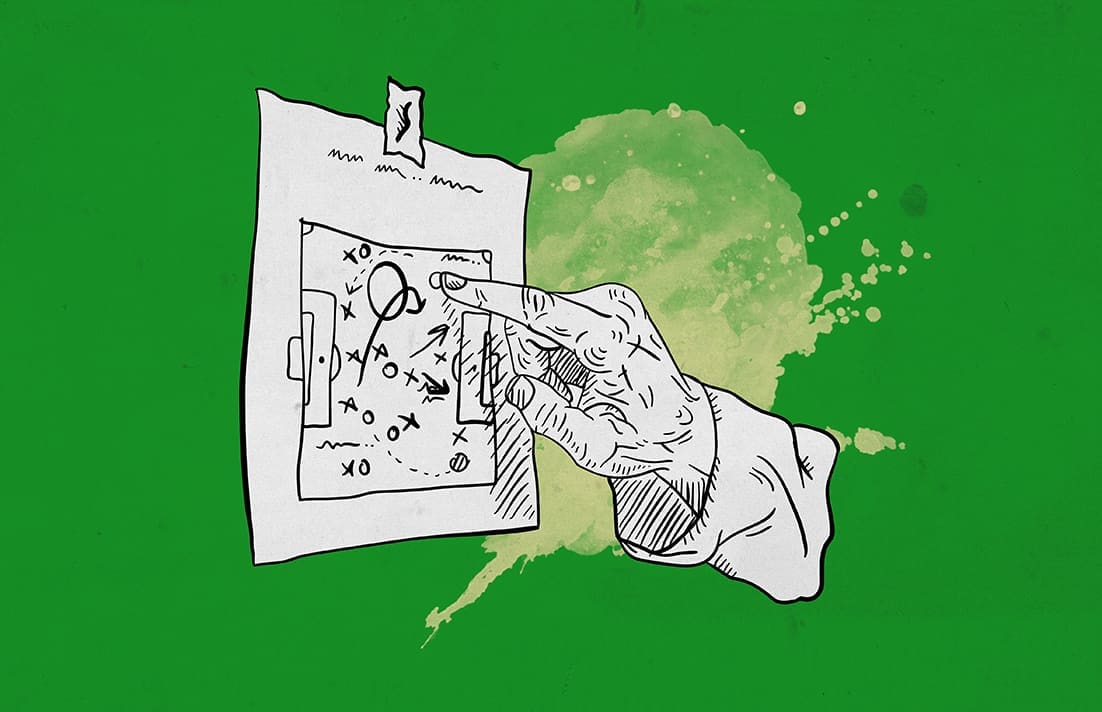



Comments